Today, we will explore tongue diagnosis. First, let me clarify that tongue diagnosis is only a part of observation diagnosis, which is one part of the four diagnostic methods in Traditional Chinese Medicine (TCM). We should not overemphasize tongue diagnosis; TCM does not solely rely on the tongue to draw conclusions or prescribe formulas.
However, understanding tongue diagnosis is quite necessary. It doesn’t cost anything and takes only about 10 minutes to grasp the basics.
1
Why can observing the tongue reveal issues within the body?
According to the principle of Dao (Tao), everything follows the same “image”. The heavens have their phenomena, humans have their forms, and the tongue has its representation. Through this “image”, we can see the essence of things. Observing the tongue, hands, and pulse diagnosis follows the same principle.
What do we observe when looking at the tongue?
We mainly look at the tongue body and the tongue coating. The tongue body is the tangible entity that corresponds to the physical aspects; the tongue coating is caused by the rise of moisture and reflects the state of the body’s Qi. For example, a swollen tongue body indicates that the body is too “full”, resulting from excessive dampness; a thick and greasy tongue coating represents an excess of turbid Qi within the body.
The tongue reflects the person. The tip of the tongue corresponds to the upper jiao, which includes the heart and lungs; the middle part of the tongue corresponds to the middle jiao, which includes the spleen and stomach; the root of the tongue corresponds to the lower jiao, which includes the kidneys. The liver and gallbladder meridians run along the sides of the body, thus also corresponding to the sides of the tongue.
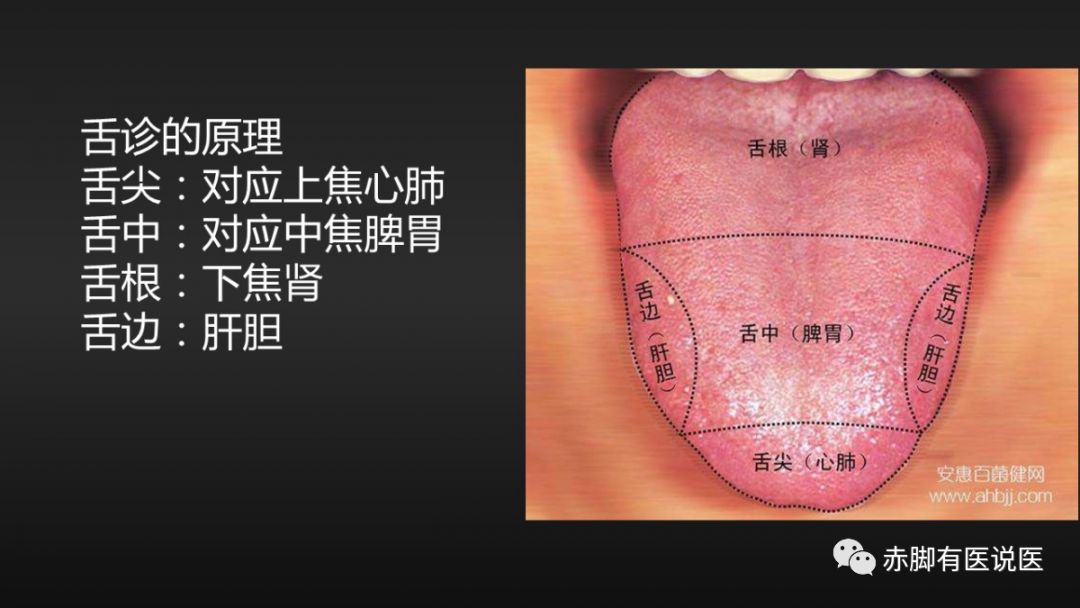
2
Let’s first look at a relatively standard tongue image. A standard tongue image is “light red tongue, thin white coating”, appearing rosy, plump, comfortable, and clean. Of course, we can only say it is relatively standard; there is no absolute standard. Next, let’s look at the images.
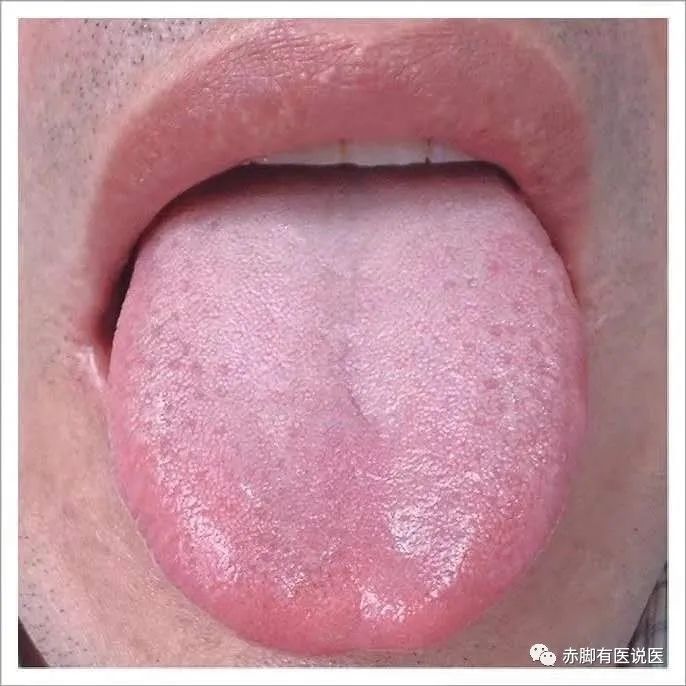
Red tongue indicates excess heat
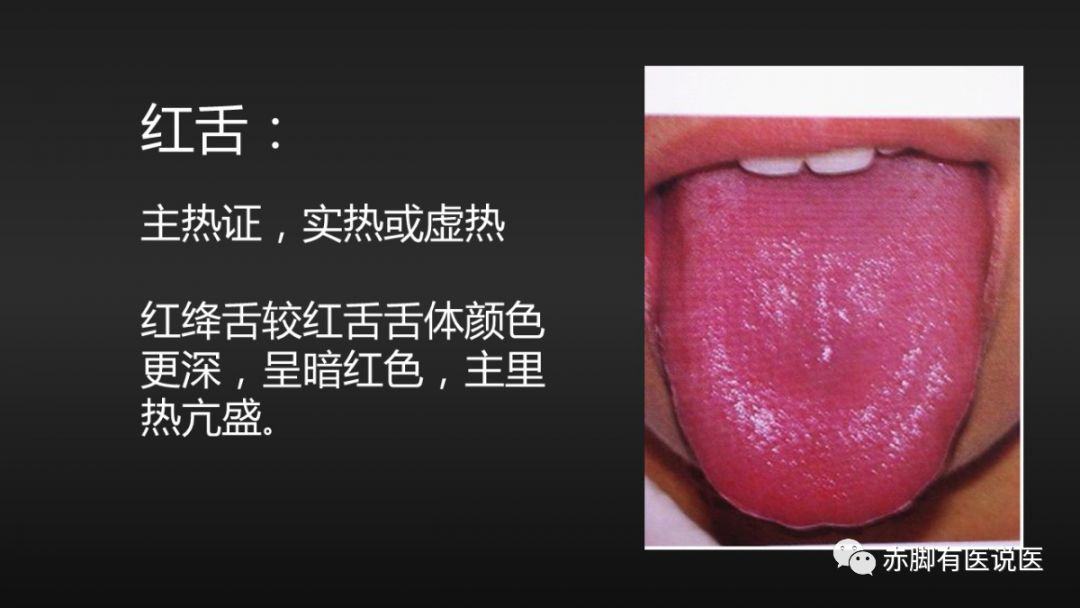
This tongue looks too red, and the entire tongue is red, indicating that there is too much heat in the body. Where is this heat located? In TCM, heat is divided into heat in the Qi level and heat in the blood level. Heat in the Qi level is relatively mild; the heat in this image is relatively mild, indicating heat in the Qi level. If the heat were in the blood level, it would be even redder, appearing as a crimson color.
Children often exhibit this type of tongue: red tip with other areas not red.
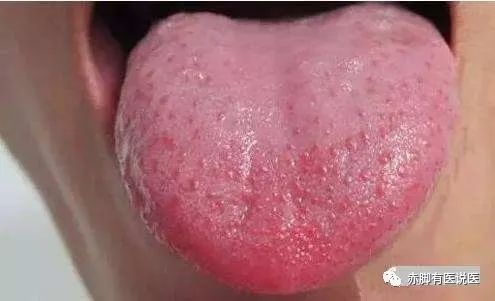
The tip of the tongue reflects the heart and lungs, which indicates a tongue image of excess heart and lung fire. Upon closer inspection, the tip of the tongue has some small dots; what does this signify? This is a manifestation of stagnant fire in the heart and lung area that cannot be expressed.
Scalloped tongue: indicates spleen Qi deficiency and excess dampness
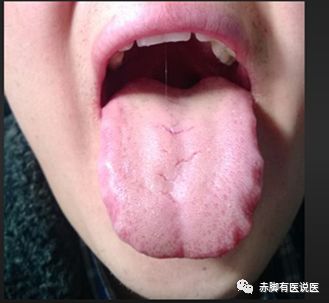
This scalloped tongue is commonly seen in modern individuals. The formation principle of scalloped edges: spleen Qi deficiency leads to poor transformation and transportation of water and dampness, resulting in excessive dampness in the body, a swollen tongue, and pressure from the tongue body against the teeth, forming scalloped edges.
Pale white tongue: indicates deficiency of both Qi and blood, and Yang deficiency
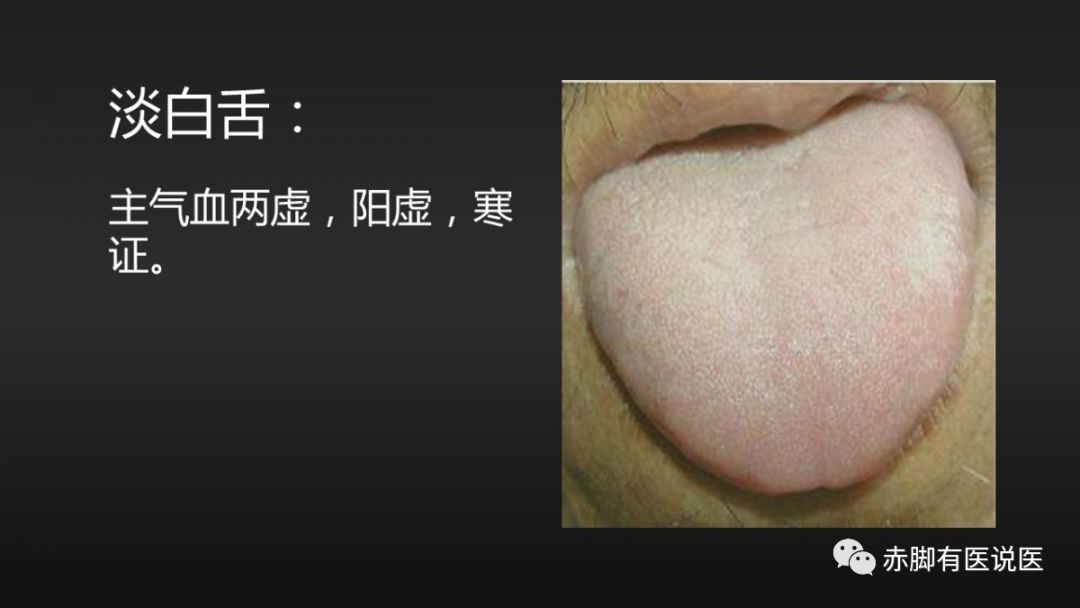
Upon seeing this tongue image, one immediately thinks of a lifeless winter, where all things wither.
The tongue body needs to be rosy, which requires blood; this tongue clearly lacks blood, indicating insufficient blood supply.At the same time, the white color indicates cold, suggesting insufficient Yang Qi.
Blue or purple tongue, dark black color, indicates blood stasis within the body.This tongue image shows significant bruising in the liver and gallbladder corresponding area, signaling liver blood stasis; this person has liver issues.
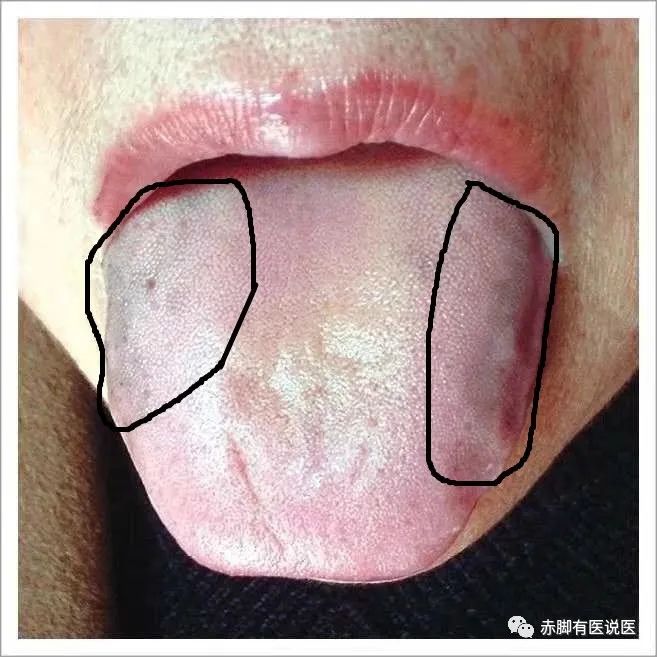
This tongue image, with two large blue veins underneath, also indicates blood stasis within the body.

Concave and cracked tongue: indicates material deficiency
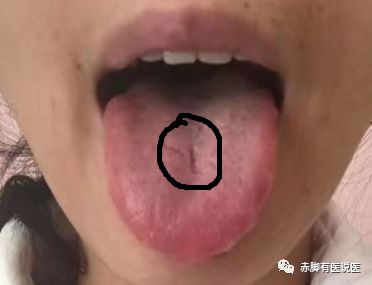
This tongue image shows a concave middle with a crack, indicating a deficiency of essential substances in the spleen and stomach. We have mentioned that the tongue body reflects material aspects; a concave tongue body indicates a lack of material aspects.
Individuals with this tongue image often have previously harmed their spleen and stomach, such as through not eating staple foods for weight loss or taking weight loss medications. After damaging the spleen and stomach, this tongue image becomes a memory, similar to how tree rings can reveal a tree’s growth history.
Thick and greasy tongue coating: indicates accumulation in the gastrointestinal tract, and obstruction of the bowels
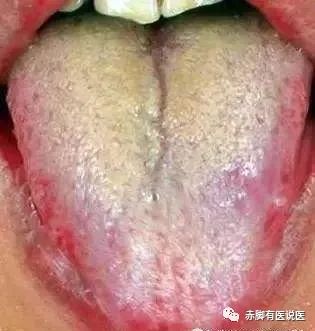
This tongue image indicates excessive accumulation in the gastrointestinal tract; if these cannot be digested, they become turbid Qi, which rises and forms this thick and greasy coating.
Additionally, the color of the coating can differentiate between cold and heat; if it is white, it indicates that the accumulation is primarily cold; if the coating is yellow, it indicates that the accumulation has transformed into heat.
Pointed tongue: indicates liver Qi stagnation
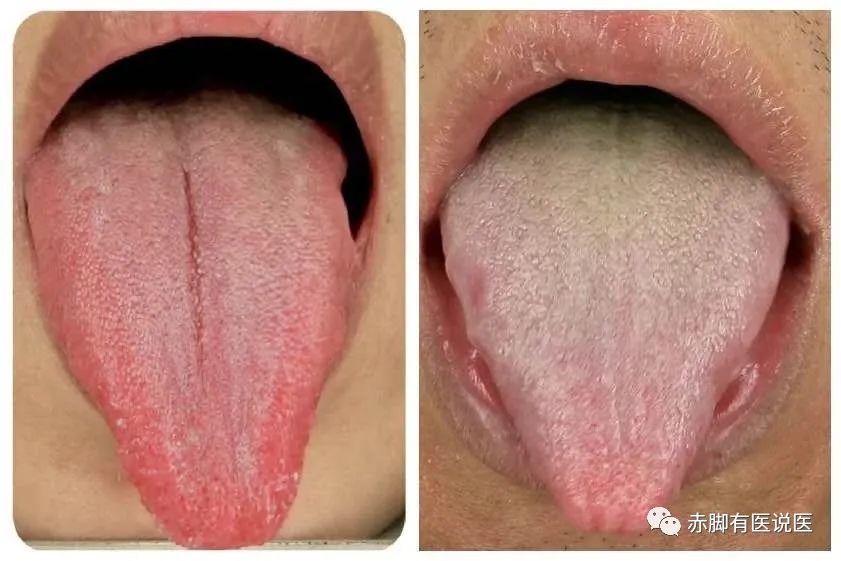
Upon seeing this type of pointed tongue, with an overall slender appearance, one thinks of a tall and thin tree. In the five elements, the liver belongs to wood, which needs to be smooth and unobstructed. Individuals with this tongue image tend to be sensitive and meticulous; they easily internalize minor grievances, leading to liver Qi stagnation.
In contrast, if the tongue is round, the person is naturally honest and does not like to argue; they often do not internalize grievances, making it less likely for them to experience liver Qi stagnation.
Deviated tongue: indicates stroke or impending stroke
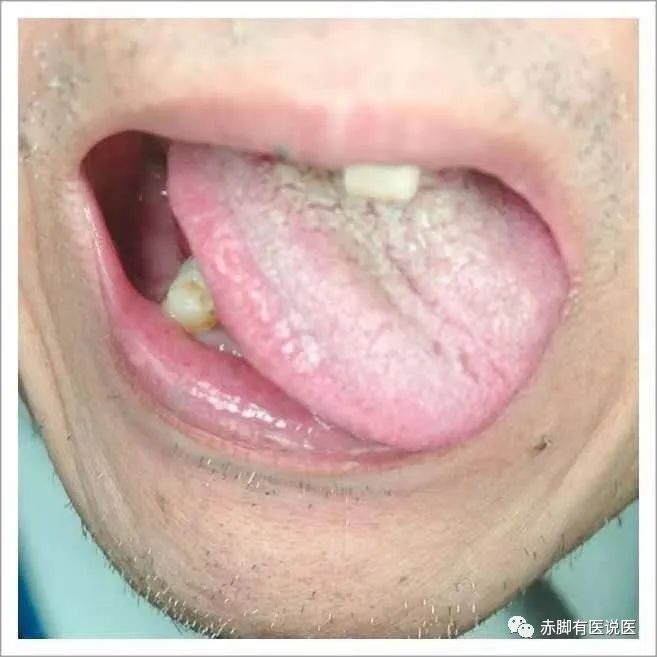
This tongue image is significantly deviated, indicating a clear sign of stroke. It can be understood as a tree blown over by the wind; the ancient saying about stroke refers to this “image”.
Older adults should observe their tongue images; if they notice their tongue deviating to one side, even slightly at first, they should pay attention as this is a precursor to a stroke.
Red tip and white root: indicates heat above and cold below
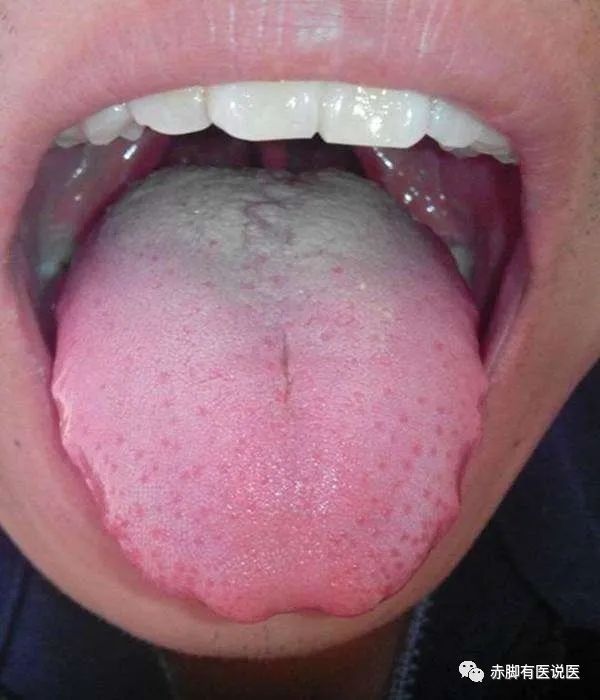
This tongue image is very clear; the heart and lung area is red, indicating heat, while the lower jiao kidney area is white and greasy, indicating typical heat above and cold below.Such individuals tend to feel hot in summer and cold in winter; consuming hot foods can cause heat, while slightly cold foods can lead to diarrhea.
Geographic tongue: indicates injury to stomach Qi
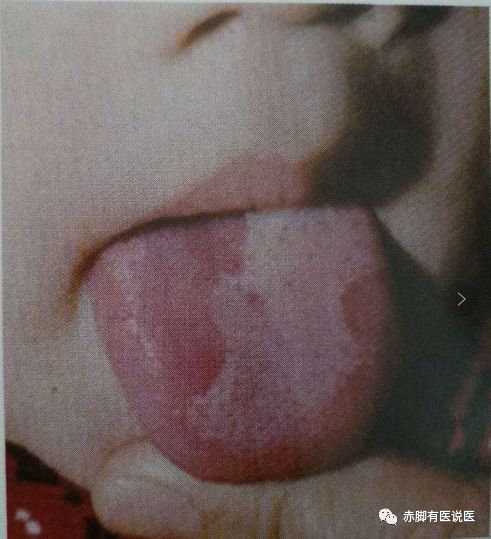
Children are prone to this “geographic tongue” where some areas of the tongue coating are present while others are absent. What causes this?The tongue coating is formed by the rise of stomach Qi, and a geographic tongue results from uneven rise of stomach Qi.
Why is the rise of stomach Qi uneven? It is likely due to injury to the stomach Qi. For example, if a child has taken antibiotics, anti-inflammatory medications, or others, it can harm the stomach Qi, leading to the formation of this geographic tongue.
Tongue images vary greatly, but they all adhere to the same core principles. Grasping the essential aspects and applying them flexibly is key. Many things require personal experience and understanding; the teacher can only guide you to the door, but the practice depends on the individual.
3
Precautions for observing the tongue:
Observing the tongue reflects the internal state of the body, so it is essential to minimize external interference.
1. Do not observe tongue diagnosis within half an hour after eating, as food color can affect judgment.
2. Do not observe tongue diagnosis within half an hour after waking up, as Qi and blood flow slowly during sleep and cannot reflect the body’s normal state.
3. Do not immediately observe tongue diagnosis after brushing teeth, as brushing can remove the tongue coating.
4. Try to observe in natural light while facing a mirror, as artificial light can distort colors. Similarly, avoid using beauty filters when taking photos to minimize color discrepancies.
Recommended Learning
1. Introduction to Basic TCM

2. Nine Major Constitution Adjustment Plans

3. Popular Interpretation of 100 Chinese Herbs

4. 100 Classic Common Formulas

5. 365 Common Disease Adjustments


A grounded individual, unaware of celestial phenomena or geographical knowledge. This account aims to promote TCM culture, not as a platform for seeking medical advice. The formulas shared here are for learning and exchange purposes; do not blindly try medications.
The most down-to-earth TCM public account

↑↑↑Scan to follow

